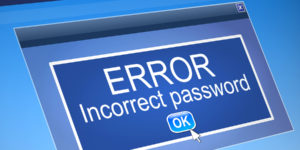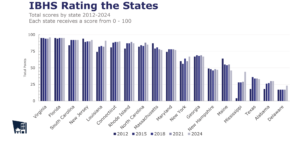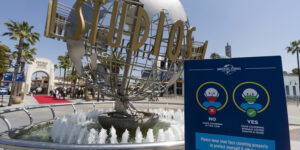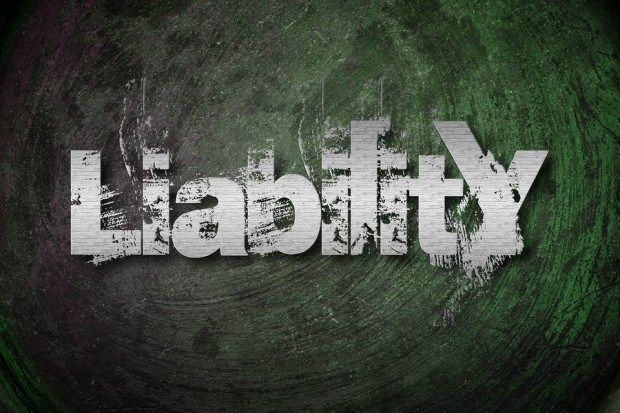 Defective product/work quality issues, crashes and human error are listed as the top causes of liability loss for businesses, according to a report published by Allianz Global Corporate Specialty (AGCS).
Defective product/work quality issues, crashes and human error are listed as the top causes of liability loss for businesses, according to a report published by Allianz Global Corporate Specialty (AGCS).
Collectively, these top three causes of loss for businesses account for more than 60 percent of the value of all liability claims analyzed, while the top 10 causes of loss account for more than 80 percent of all liability losses, said the report titled “AGCS Global Claims Review – Liability in Focus.”
The report is based on an analysis of more than 100,000 liability insurance claims from more than 100 countries received by insurers, including AGCS, for the years 2011-2016 with a total value of €8.85 billion (US$9.3 billion).
The report goes on to detail the top three causes of liability loss by total claims value:
- Defective product/work incidents.As the top cause of liability losses, defective product/work incidents account for 23 percent of the value of all claims received and is the third-highest generator of number of claims. Today’s complex global supply chains, which involve a large number of products and suppliers, can result in larger claims that are more challenging to settle, the report noted.
Examples of such liability losses include: tainted medicine; hot coffee spills in the lap of a customer causing scalding; car explosion due to faulty gas tank design; worker injured when faulty welder explodes.
- Collision/crash incidents.Significant improvements in automotive and aviation safety have reduced the number of major collision/crash incidents, Allianz said. However, these events are still a major contributor of global liability losses, accounting for 22 percent of the value of all claims, or the second largest cause of liability losses, while also generating the most claims.
Examples of collision/crash incidents include: driver speaking on cellphone or intoxicated driver crashes into another vehicle; outdoor venue collapses, injuring public; technical problems lead to airplane crash.
- Human error.As the third cause of liability loss with a total value of 19 percent of all claims analyzed, human error represents just 1 percent in terms of claims frequency. This loss category includes the impact of everyday employee errors as well as larger shipping and aviation events. “For example, in the shipping sector, it is estimated that between 75 percent and 96 percent of all accidents can be attributed to human error.”
Examples of human error include: introduction of wrong fuel type causes a vehicle to lose power and crash; employee opens an attachment and spreads a virus through the company’s IT systems; a private contractor disconnects a pump and doesn’t reconnect it, causing a flood.
The remaining seven of the top 10 loss categories are:
- Accidental nature/damage, which accounts for 6 percent of the value of all claims received.
- Slips/falls/falling objects (6 percent of the value of all claims received).
- Water/fire/smoke damage (3 percent of the value of all claims).
- Environmental damage (3 percent).
- Natural hazards (2 percent).
- Vandalism/terrorism (1 percent).
- Property damage (1 percent).
Claims Trends
Additional liability claims trends discussed in the report include:
- Claims payments can vary enormously in scale, reflecting the diverse nature of the risk landscape. For example, major liability losses of more than €1 million ($1.1 million), such as aviation, shipping or terrorism incidents, account for fewer than 1 percent of claims by number while representing 74 percent, or more than €6.5 billion ($6.8 billion), of the total value of all claims analyzed. Conversely, approximately 80 percent of claims are valued at or below €20,000 ($20,896), or 3 percent of the total value of all claims analyzed.
- The U.S. remains the world’s largest liability market, but U.S.-style litigation is spreading in Europe and Asia, along with rising consumer awareness and collective redress using class actions, which are now possible in many countries beyond the U.S. and Europe.
- The impact of collision/crash and slips/falls/falling objects are the most frequent liability claims for insurers, accounting for 48 percent of all claims by number. “However, the frequency of these claims has been declining in many major casualty markets, a reflection of improvements in risk management and better safety regulation, as well as a shift away from heavy industry.”
- There is increasing potential for large liability claims to be more expensive, complex and international. For example, industrial, environmental, product liability and financial lines claims in excess of $1 billion are more commonplace across the globe.
- Large environmental liability claims such as pollution are increasing, particularly in the mining and construction sectors. These claims can be complex, costly and take time to settle – particularly challenging in emerging markets, as a result of differences in culture, language and legal systems.
Source: AGCS





















 Executives on the Move at AIG, White Mountains, Vermont Mutual
Executives on the Move at AIG, White Mountains, Vermont Mutual  Worst Is Over: Most of Casualty Reserve Hole May Be Filled, Analyst Says
Worst Is Over: Most of Casualty Reserve Hole May Be Filled, Analyst Says  Former MLB Player Charged With Insurance Fraud in Florida
Former MLB Player Charged With Insurance Fraud in Florida  Time-Tested Loss Reserving Methods Challenged: AM Best
Time-Tested Loss Reserving Methods Challenged: AM Best 





